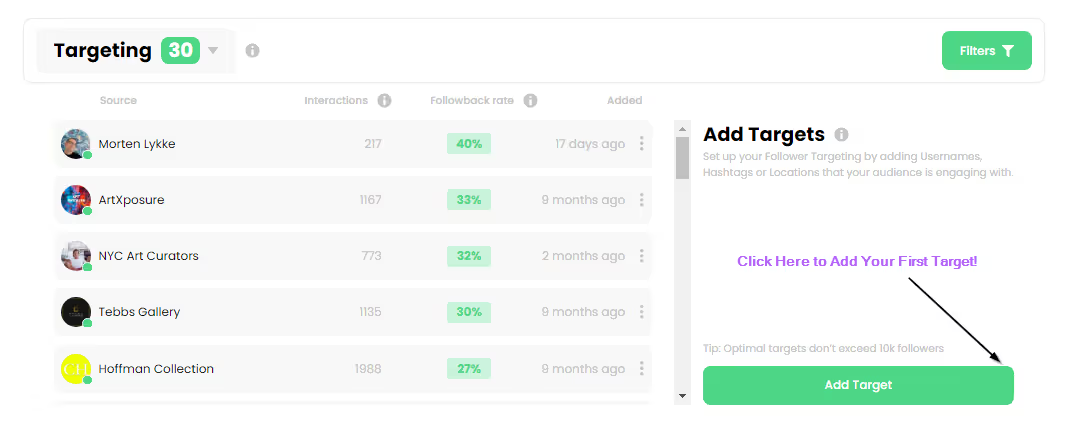
Boost Financial Service Leads with Instagram Ads


Instagram has quietly become one of the most powerful channels for financial services brands that want to be visible where people actually spend their time. Users now open the app to do far more than scroll lifestyle pictures; they search for budgeting tips, follow investing creators, watch bite-size explainers on credit scores, and compare tools that help them manage money. For banks, fintech startups, insurance companies, and advisors, that behavior creates a rare chance to show up in the exact moment someone is thinking about their financial future.
The challenge is that financial products are complex, heavily regulated, and often intimidating to ordinary users. Instagram Ads solve part of that problem by turning complicated offers into accessible stories, but only when campaigns are planned with strategy, compliance, and creativity in mind. When those pieces align, Instagram becomes more than a brand-awareness platform; it turns into a consistent engine for qualified leads, app installs, and long-term client relationships.
Instagram Ads Potential
Financial brands traditionally relied on search ads, outdoor campaigns, and long-form content to reach prospects. Those channels still matter, but Instagram has become the place where many people discover brands for the very first time. Short videos, carousels, and Stories make it easy to introduce ideas like refinancing, long-term investing, or retirement planning without overwhelming the viewer.
Because that level of content production can be intense, many teams explore outsourcing specific tasks such as creative design, ad management, or copywriting. Insights from resources like why you should outsource your Instagram marketing help financial marketers decide when it is smarter to bring in outside experts instead of trying to do everything in-house.
Industry-level performance data also shows that Instagram is not just a cosmetic add-on to your media mix. Analyses such as WordStream's breakdown of Instagram ads performance indicate that service-based businesses, including finance, can achieve strong click-through and conversion rates when they focus on transparent messaging and useful content rather than hype.
Why Instagram Works for Finance
Money is emotional. People worry about security, debt, investments, and their family’s future, and they want to feel they are dealing with a brand that understands those concerns. Instagram is uniquely good at humanizing financial institutions, because it encourages behind-the-scenes content, educational snippets, and approachable visual storytelling.
For teams that are still getting comfortable with the platform, it helps to start with a broader view of how Instagram fits into your overall digital presence. Guides like Instagram marketing walk through the basics of profile optimization, content planning, and engagement, which provides a foundation before layering paid campaigns on top.
Another reason Instagram works so well for finance is repetition. Users might see a Reel explaining mortgages, a Story about credit utilization, and a static image about retirement planning all from the same brand in a single week. Over time, that repetition builds familiarity and trust, which are essential when you eventually ask someone to open an account, move assets, or share sensitive information.
Ad Formats That Work
Instagram offers different ad formats that can be mapped to distinct stages of your marketing funnel. To choose wisely, you need to balance how much explanation your offer requires with how much attention your audience has in that moment. A detailed guide to the main options is available in the overview of types of Instagram ads, which breaks down placements and specifications in depth.
{{blog-cta-section}}
Feed ads for depth
Feed ads are ideal when you need more space to explain a financial product. A mortgage broker might use a carousel ad to show three scenarios where refinancing makes sense, while an investment platform could use a single image and a longer caption to explain how its fee structure differs from traditional brokers.
Because many financial brands also advertise on other networks, it is useful to compare how Instagram feed placements perform next to other social channels. Articles such as Instagram marketing versus Facebook help highlight differences in user behavior, creative expectations, and costs so you can assign the right objectives to each platform.
Stories and Reels for simplicity
Stories and Reels are perfect for turning complex topics into short, memorable lessons. A thirty-second Reel that explains what an emergency fund is, or a series of Story frames that walk through the steps of applying for a loan, can do more to build trust than a dense product page.
If you need inspiration for motion-based creative, it is worth looking at examples and ideas collected in resources like Instagram Reels ads. Seeing how brands use movement, text overlays, and pacing will help your team storyboard campaigns that feel native to the platform rather than like repurposed TV spots.
Lead ads for frictionless signups
For many financial services brands, the real value of Instagram lies in its ability to capture contact details from people who are ready to talk. Lead ads let users submit their information without leaving the app, which is especially important when they are viewing on mobile during a busy day.
Because finance is a regulated industry, every form and every promise in your lead ad must comply with platform rules. Before you launch, it is smart to review the official Instagram help documentation for ads and policies so that your legal and compliance teams can align your disclosures with both local regulations and Instagram’s own standards.
Targeting Strategies

Even the best creative will fall flat if it reaches the wrong audience. One of Instagram’s biggest advantages for financial marketers is the ability to target people based on their behaviors, interests, and connections. Someone who follows personal finance creators, engages with budgeting content, or frequently interacts with business and investing accounts is far more likely to respond to a financial ad than a randomly selected user.
If you are building your strategy from scratch, it helps to think in terms of audiences rather than isolated campaigns. Frameworks covered in Instagram marketing strategies show how to group prospects into stages, from cold awareness to warm remarketing, and then assign creative that speaks to their specific level of familiarity.
There are also niche opportunities in targeting users who already show an affinity for financial tools. People who search for or interact with trading platforms, for example, are often responsive to ads for educational resources, new brokers, or portfolio-tracking apps. A segment that downloads or researches tools such as the mobile-focused trading solution promoted via the metatrader 5 apk download link is likely to be comfortable with digital finance and open to trying new services.
Retargeting is non-negotiable in financial services, because most people do not make big money decisions after a single exposure. Building audiences of users who have watched your videos, visited your site, or opened a lead form lets you keep the conversation going over weeks or months.
Compliance Essentials
Compliance is where many financial campaigns live or die. Regulators expect clear disclosures, balanced messaging, and the absence of misleading claims, and social platforms add their own rules on top. It is not enough for the legal team to sign off on a generic disclaimer; every variation of your ad must meet the standard.
Many brands solve this by building templates and working with specialist writers who understand both marketing psychology and compliance language. Resources such as writing services for marketing content can be helpful when you need a repeatable way to produce copy that converts without crossing regulatory lines.
At a minimum, your team should align on which products require which disclosures, what kind of performance language is allowed, and how risk should be described. You also need a process for checking that disclaimers remain visible and legible in every placement, especially on smaller mobile screens where text can be truncated.
{{blog-cta-section}}
Creative Best Practices
Creativity in finance does not mean loud colors and dramatic promises. Instead, it means finding clear, calm ways to explain ideas that are often confusing or intimidating. Users should feel smarter and more in control after seeing your ad, not more anxious.
Looking at examples of high-performing creatives can save a lot of testing time. Case studies and frameworks in resources like Instagram story ads that convert show how brands combine strong headlines, simple imagery, and focused calls to action in a way that respects the user’s limited attention.
In the financial sector, visuals that use clean layouts, generous white space, and plain language tend to outperform designs that are crammed with numbers and jargon. When you do use figures, present them as illustrative examples rather than promises, and make sure there is supporting context in the caption or landing page.
Lead Generation and Funnels
Instagram becomes especially valuable when you treat it as part of a larger funnel rather than an isolated traffic source. A user may first encounter your brand through an educational Reel, then tap through to your profile, then click a website link, and only later submit a form. Your ads should acknowledge that journey.
Lead generation works best when the offer feels like a natural next step from the content a user has already consumed. A free consultation, a downloadable checklist, or access to a webinar on managing debt are all strong offers for someone who has just watched a video about budgeting or credit.
If you want to refine how those offers are presented, you can borrow ideas from the layouts and messaging styles described in the beginner’s guide to Instagram branded content ads. That kind of structure helps ensure that your promotional posts still feel like useful content rather than hard sells.
Once leads are captured, speed matters. Financial decisions often involve comparison shopping, so the brand that responds first with a clear, helpful follow-up often wins the business. Building automated email sequences or CRM workflows to nurture Instagram leads can dramatically increase the return on your ad spend.
Budget and Benchmarks

Financial services sit in a competitive category, so it is normal to see higher costs per thousand impressions than in lifestyle or entertainment niches. The upside is that each new customer is often worth far more over a lifetime, which means that slightly higher acquisition costs can still be highly profitable.
To make smart budgeting decisions, you need clarity on your own numbers rather than relying solely on broad industry benchmarks. That said, strategic overviews like those in ads for brand growth can help you think about how to allocate spend between prospecting and remarketing, and how to adjust budgets as you discover which audiences respond best.
Testing is essential at this stage. Small experiments with different creatives, placements, and offers will show you where costs begin to fall and where diminishing returns appear. Over time, you should be able to build a predictable model of how many impressions and clicks are required to generate a consultation, an approved application, or a funded account.
Common Mistakes to Avoid
Because financial products are complicated and attractive to many people, it can be tempting to push too hard in your messaging. Overpromising returns, glossing over risk, or implying guaranteed outcomes may produce short-term engagement but will inevitably cause problems with regulators, platforms, or unhappy customers.
Another common mistake is treating every user as if they are at the same stage of the journey. Someone who has never heard of your brand needs basic education and reassurance, while someone who has already visited your pricing page might be ready for a time-limited offer or a direct invitation to book a call. The audience frameworks outlined in Instagram marketing strategies can help you match the right message to the right mindset.
Many financial brands also underuse retargeting. They invest heavily in top-of-funnel awareness but fail to stay visible during the weeks when a prospect is quietly comparing options. Well-structured remarketing sequences, using both ads and organic content, keep your brand at the front of the queue when a final decision is made.
Advanced Tips for Financial Brands
Once you have the foundations in place, you can begin layering more advanced tactics onto your Instagram advertising. One approach is to build thematic content series around specific life stages or goals, such as buying a first home, planning for children’s education, or preparing for retirement. Each series can include organic posts, Stories, and ads that guide users through awareness, consideration, and action.
You can also use Instagram insights to spot which topics consistently drive saves, shares, and profile visits. Those patterns tell you where there is unmet demand for clearer information. By turning those topics into paid campaigns, you ensure that your highest-value content reaches people beyond your existing followers.
Collaboration is another lever. Partnering with creators who specialize in personal finance can expand your reach and add a human face to your brand, as long as you maintain strict guidelines around claims and disclosures. Branded content tools and clear contracts make it possible to combine creator authenticity with institutional compliance.
Real Campaign Scenarios

It can be easier to understand how all of these pieces fit together by looking at hypothetical but realistic scenarios. Imagine a regional bank that wants to grow its base of first-time home buyers. The marketing team begins by publishing organic Reels that explain simple topics such as how much of a down payment is really necessary or how pre-approval works. Once those Reels pick up steady views, the bank turns the best performing clips into paid ads and sends them to local audiences who have shown interest in property, interior design, and family-related content.
People who watch those videos are then added to a remarketing audience. They begin seeing feed ads that invite them to download a step-by-step guide to preparing for a mortgage application. The guide is hosted on a landing page that mirrors the look and feel of the Instagram content, so there is no jarring shift in tone. Behind the scenes, the bank’s sales team receives notifications when a guide is downloaded and follows up with a friendly email offering a free consultation to review the customer’s situation.
A fintech app might follow a similar pattern but with a focus on recurring engagement rather than a single big decision. The company could start with educational posts that compare traditional banks to modern tools, borrowing angles similar to those explored in resources like Instagram marketing versus Facebook, but applied to finance versus fintech. Once a user has visited the app’s site or pricing page, they begin receiving Instagram ads that highlight specific features such as automated savings rules or real-time spending alerts.
Over time, both of these brands use Instagram not just to generate clicks, but to move people through a thoughtful sequence of education, evaluation, and action. That is the real power of the platform for financial services: it supports relationships that develop over weeks and months, which is exactly how most meaningful money decisions are made.
Final Thoughts
Instagram Ads are not a magic shortcut for financial services, but they are a uniquely powerful way to meet modern consumers where they already are. When you use the platform to educate rather than alarm, to clarify rather than confuse, and to build long-term trust instead of chasing quick wins, it becomes an asset that supports every part of your marketing funnel. With thoughtful targeting, disciplined compliance, strong creative, and a clear follow-up process, financial brands can turn Instagram from a nice-to-have presence into a predictable source of awareness, leads, and loyal clients.




.jpeg)
.jpg)